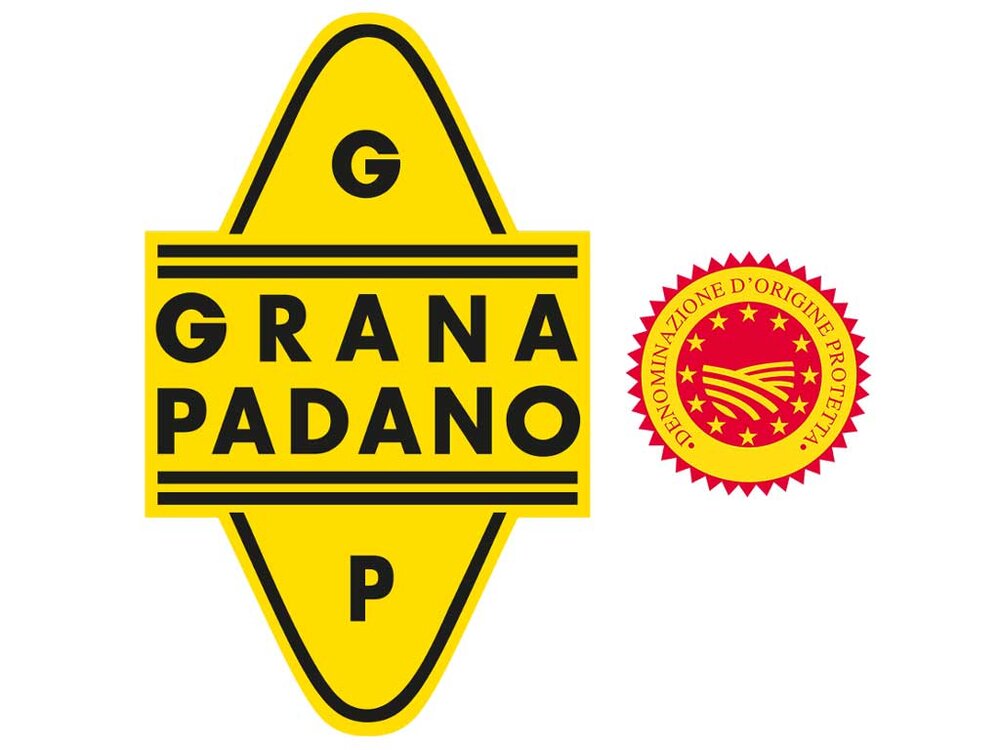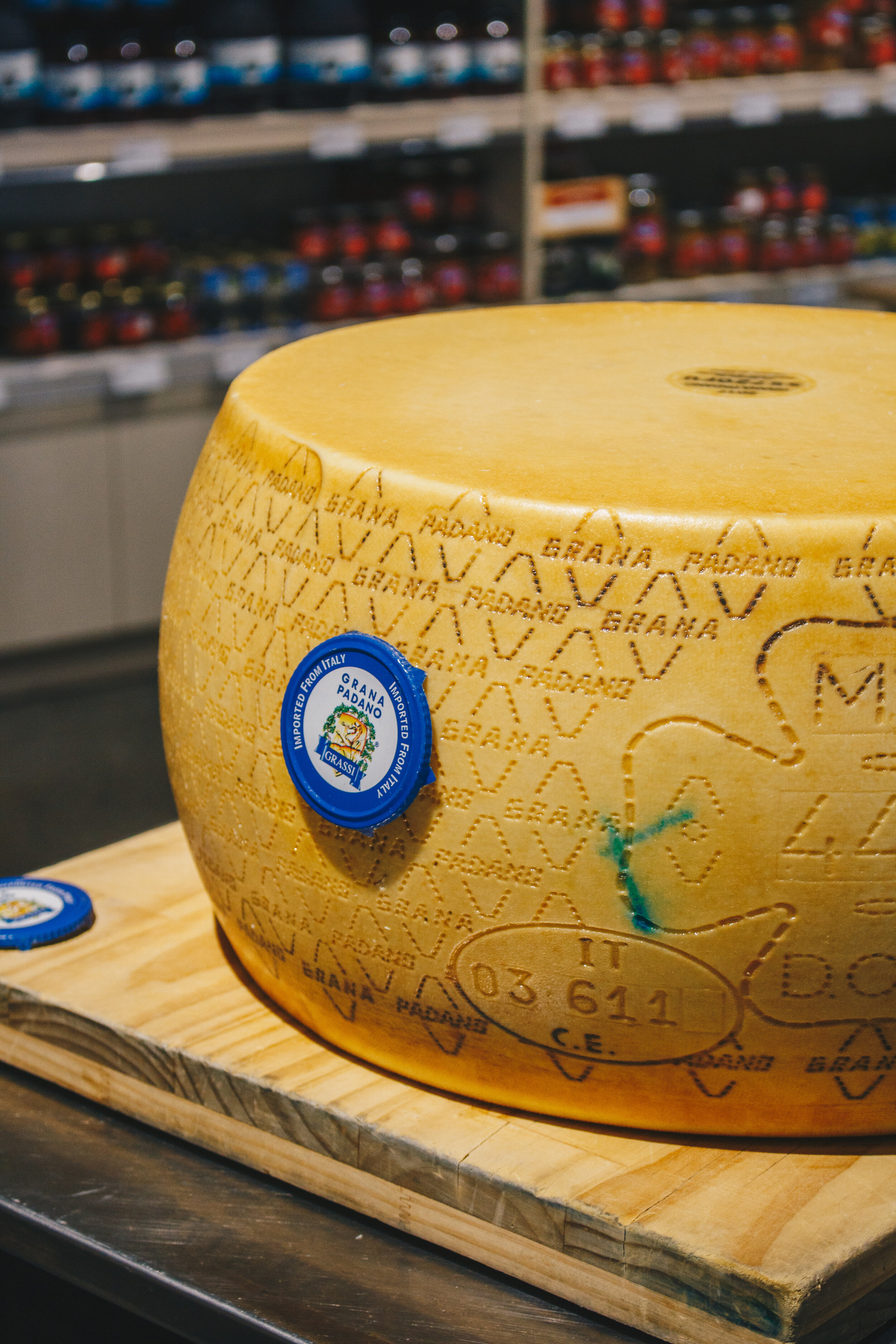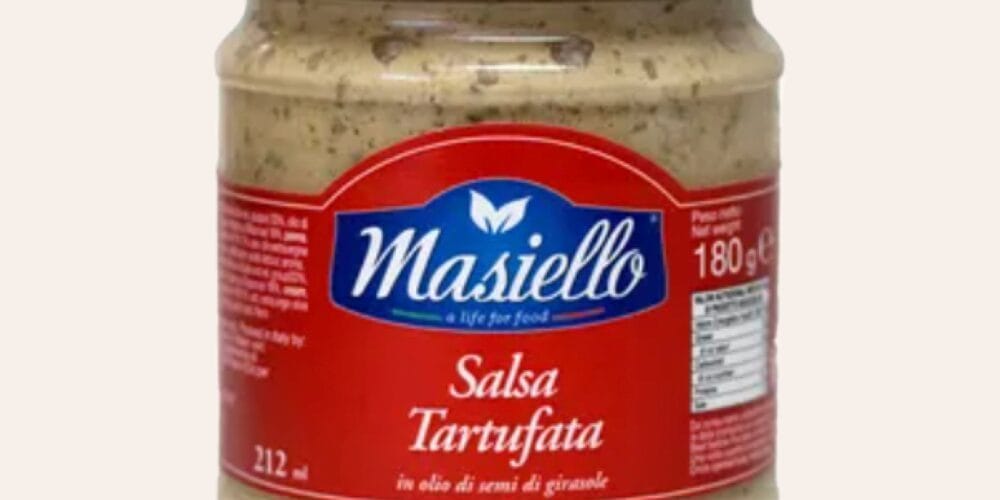
Grana means “granular“ it falls apart on the tongue, like a sugar cube. Padano refers to its origin: a clearly defined area around the Po River in northern Italy.

Grana Padano was one
of the first cheeses protected by the European Union. Not just anybody can produce a cheese called Grana Padano. Like Champagne, it is connected to a region and to regulations.
Monks developed the recipe for Grana Padano in the 12th century, aiming for a practical hard cheese that could be aged in caves for years.
Aged for a minimum of 9 months, this cheese is produced with milk from free-range cows that are let to graze on fresh forage and silage.

Grana Padano is instantly recognisable. Each one of its wheels is characterised by its marks of origin. If those marks are not there, then it is not Grana Padano. These marks act as Grana Padano’s unique, personal signature: they distinguish it from any other product. They certify its quality, its origins and its uniqueness as “traditional cheese”.
Thanks to Grana Padano’ds raw materials, it has great nutritional qualities.
60g of Grana Padano contains the same amount of nutrients found in 1 litre of milk.
Eating Grana Padano regularly will boost your daily intake of mineral salts which form a vital part of a balance diet, such as zinc, copper and phosphorus but, most importantly, calcium.
It is also an important source of A and B2 vitamins
Grana Padano is a semi-fat cheese, meaning it is made from partially skimmed milk.
Grana Padano is completely carbohydrate free and is lactose-free due to the characteristics of its production and to the long ageing period, which is why it is perfectly suited for people who suffer from lactose intolerance.
Full-bodied, this hard cheese delivers a savoury and nutty touch with a dense and somewhat flaky texture. Creamy, mild and with a lingering aftertaste, it can be enjoyed on its own or to complement your dish.
From “beginning to end” – Aperitifs, appetisers and desserts.
Served as an aperitif or as a dessert, Grana Padano is the perfect way to whet your guests’ appetite or to end a meal. Ideally, you should take it out of the fridge one hour before being used, unwrapping the cheese beforehand to allow it to breathe and fully express its fragrance and flavour.
FOOD AND WINE PAIRINGS
Fresh bread and Grana Padano go well.
Grana Padano can be thinly shaved so it melts on the tongue, grated into dishes, or if you’re really hungry simply cut yourself a large chunk and take a bite.
Grana Padano pairs well with figs and dried fruit, sliced apples, or a drizzle of honey. For a savory snack pair with walnuts, olives or cured meat.
The fruity, nutty flavor and rich texture of Grana Padano pairs well with a full-bodied, aromatic white wine or a big Italian red like Barolo.
Grana Padano is great with Prosecco and other bubblies!


